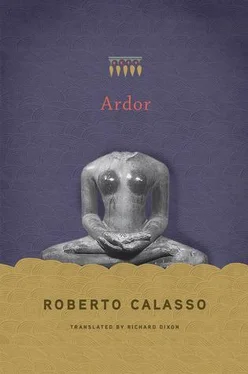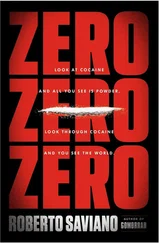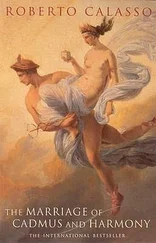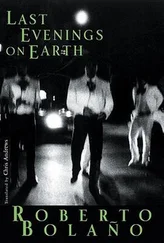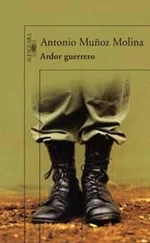Relations between the Self, ātman , and the I, aham , are tortuous, fragile, ambiguous. And it couldn’t be otherwise. Everything goes back to the beginning, when there was only the Self, in the form of a “person,” puruṣa : “Looking around, he saw nothing other than his Self. And the first thing he said was: ‘I am.’ And so was born the name ‘I.’” It is the primal scene of consciousness, which reveals the precedence of a reflexive pronoun— ātman , one’s Self. Thinking about one’s self precedes thought. And thinking about one’s Self takes the form of a person, puruṣa : it has a physiognomy, an outline. This is immediately indicated with another pronoun: I, aham. In that moment a new entity appears, which has the name I and is superimposed point by point on the Self, from which it is born. From then on — until knowledge, veda , flashes forth — the I will be indistinguishable from the Self. They look like identical twins. They have the same outline, the same sense of omnipotence and centrality. After all, at the moment when the I appeared, there was still nothing else in the world. And so the first to fall into the delusion of the I was the Self. After the creatures were created, the Self, as a result of its many erotic metamorphoses, looked at the world and realized that it had created it. And it said: “Indeed I ( aham ) am creation,” already forgetting that this I was only the first of his creatures.
* * *
The doctrine of I and Self, aham and ātman , like all Vedic doctrines, can neither be proved nor disproved. It can only be experienced: by each person, on himself. This doctrine may sound odd to those who think of their minds as clear-cut, solid objects, which at most are turned on and off, almost like switches, when sleep takes over or when they wake up. If, however, the mind operating in each person is not one single block, but is at least crossed by a fissure, varying in depth from moment to moment, between the one who is looking and another being, who gazes back at the one who is looking, then we begin to glimpse what lies behind the division between aham and ātman. But it is only a beginning. The words that form in the mind — and tend to create a self-contained fortress — must also realize they are facing another (nonlinguistic, perpetually active) part with which at any moment they may clash or amalgamate or become entwined (but these ways of relating are far more numerous and subtle).
The consequences of this realization are incalculable. And they do not necessarily lead along the Vedic path, with all its impressive apparatus of correspondences and connections. But they certainly lead to a realization that the unknown is much greater than had first been acknowledged. An unknown that is not just outside the mind, but inside it and perhaps vaster even than the unknown that lies outside. This realization could therefore be the basis on which thought begins to develop.
* * *
How do we explain why the figure that appears in the pupil of the eye has assumed such an importance? Because it is the only point on the surface of the human body that has a reflection , therefore the capacity not only to see, but to reflect what the eye sees in another form. And that form will be impalpable and minuscule, but will correspond , point for point, to the figure that the eye perceives in the outside world, so that even the being who dwells in the pupil will have a head, a body, legs and arms, just like the person who appears in the world in front of the eye. And that person will also have another eye, into which the eye of the onlooker will be reflected. This ensures a potentially perpetual and interminable communication of reflections. If that tiny figure were not there in the pupil, the human body would be a compact surface and would offer no glimpse of the other life that carries on in the sealed chamber of the mind.
* * *
Self-referentiality, this movement of thought that was enough for Gödel to break up the whole edifice of formal systems, beginning with arithmetic, appeared on the linguistic scene for the first time when the reflexive pronoun ātman , valid for all people, singular and plural, appeared as an entity, a noun, usually translated as “Self.” This happened in the Veda: first at the end of certain hymns — not the most ancient — from the Atharvaveda , then more frequently in the Brāhmaṇas, to the point where ātman became the ubiquitous hallmark of the Upaniṣads. Indian thought from then on revolved around this word, treating it in a whole variety of ways, from Buddha to Śaṅkara. Never allowing it, though, to lose its centrality. India begins and ends with something that was to become central in the West only at the beginning of the twentieth century, with the discovery of the paradoxes in set theory.
The Vedic ritualists certainly didn’t react like those Western thinkers who were appalled when they discovered those paradoxes, because they saw every claim to a coherent and consequential speculative structure fall to pieces. The Vedic ritualists, instead, seemed perversely attracted by paradoxes in general. In them they saw the very substance of enigmas. And enigmas formed the bedrock of what they expressed, in their hymns and in their commentaries on ritual. They were different ways of describing, formulating, illustrating, applying the same unknown quantity, which they called brahman.
* * *
There was a teacher, Sanatkumāra, and his pupil, Nārada. The teacher was a kṣatriya , a warrior, and his pupil a brahmin. Nārada was one day to become an ever-present ṛṣi, the one who most enjoyed involving himself in the affairs of others. A tireless talker. But before that he had been one of the many pupils who used to appear before his teacher with a burning ember. The teacher anticipated him, saying: “You come to me with that which you know.” Sanatkumāra evidently knew that Nārada was no ordinary pupil, but was already overburdened with learning. And this had to be corrected. “Tell me what you know,” asked the teacher, “I will tell you what goes beyond this.” Impudent irony, since “know” in Sanskrit is veda. And the pupil proudly and diligently displayed his knowledge: “The Ṛgveda , the Yajurveda , the Sāmaveda , fourthly the Atharvaveda , fifthly the ancient stories.” Everything so far followed the prescribed order. But the pupil wanted to excel, so he continued to list other knowledge he had acquired: “The Veda of the Vedas, the ritual for the ancestors, the computation of numbers, divination, the art of finding treasures [according to Olivelle, but Senart translates it as “knowledge of time”], dialogues, monologues, the science of the gods, the science of ritual, the science of the spirits, the science of government, the science of the celestial bodies, the science of snakes.” Worn out by his list, Nārada concluded: “Here, sir, is what I know.”
Then, straight after, Nārada showed himself in a new aspect: no longer the faultless pupil, proud of his knowledge, but an anxious and bewildered young man, a prototype of the hapless student. He said: “I know nothing, sir, apart from liturgical formulas ( mantras ), I do not know the Self ( ātman ). But I have heard of it, sir, from others like you: ‘He who knows the Self goes beyond suffering.’ I, sir, am suffering. Sir, ferry me to the other bank of suffering.”
The immense Vedic expanse, brimful of gods and powers, was suddenly reduced to one narrow gap. The same that would attract the Buddha — and, one far-off day, Schopenhauer. The teacher came straight to the point and answered: “All you have listed are nothing more than nouns.” And this marked the beginning of a breathtaking passage. Using a recursive procedure, Sanatkumāra began a succession of interlinked thoughts that spanned worlds before returning right back to the beginning. For each power, he explained which power was even greater. “Speech indeed is more than nouns.” Puzzlement, at first. For that which speech knows (the Vedas and all the learning listed by Nārada) seems to be exactly the same as that which nouns make it possible to know. But here he was referring to the god Speech, Vāc, celebrated in the Ṛgveda as she who penetrates everything and to whom nothing can be denied: “The sky, earth, air, atmosphere, waters, incandescent energy, gods, men, animals, birds, plants and trees, all the beasts down to worms, insects and ants, the just and the unjust, true and false, good and bad, pleasant and unpleasant.” Speech is more powerful than nouns to exactly this extent.
Читать дальше
